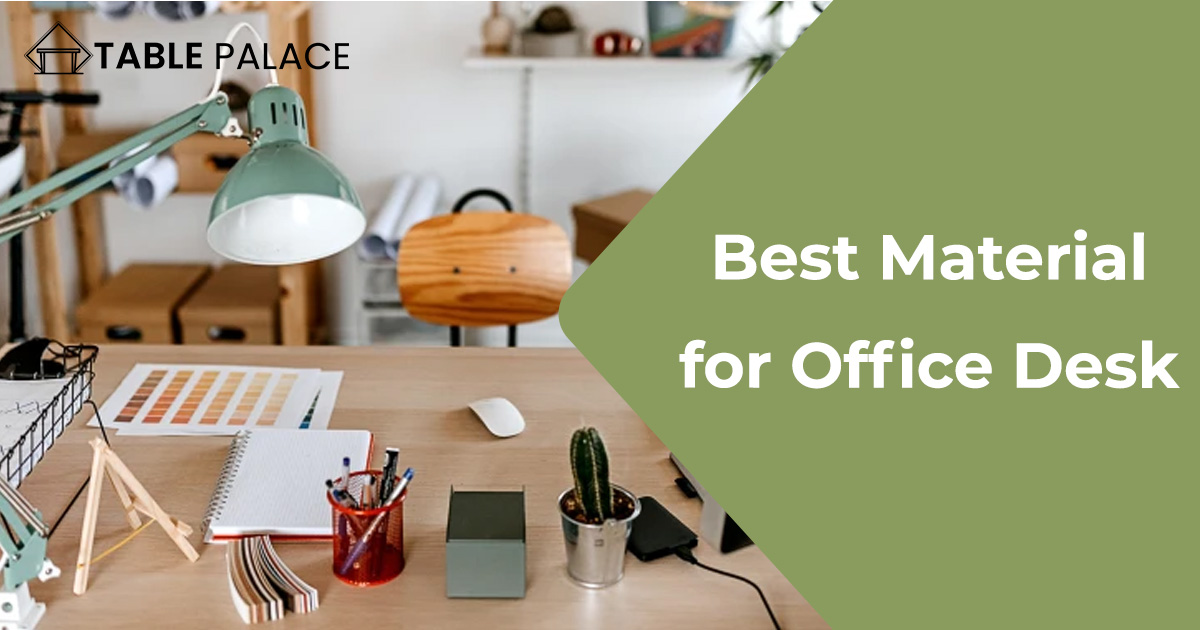Choosing the right material for your office desk is crucial for creating a functional and comfortable workspace. With so many options available, it can be overwhelming to decide which one is best for you. In this article, we’ll explore the top materials for office desks, including their pros and cons, so you can make an informed decision and find the best material for your needs. Whether you prioritize durability, affordability, or aesthetics, we’ve got you covered. So let’s dive in and find the perfect material for your office desk!
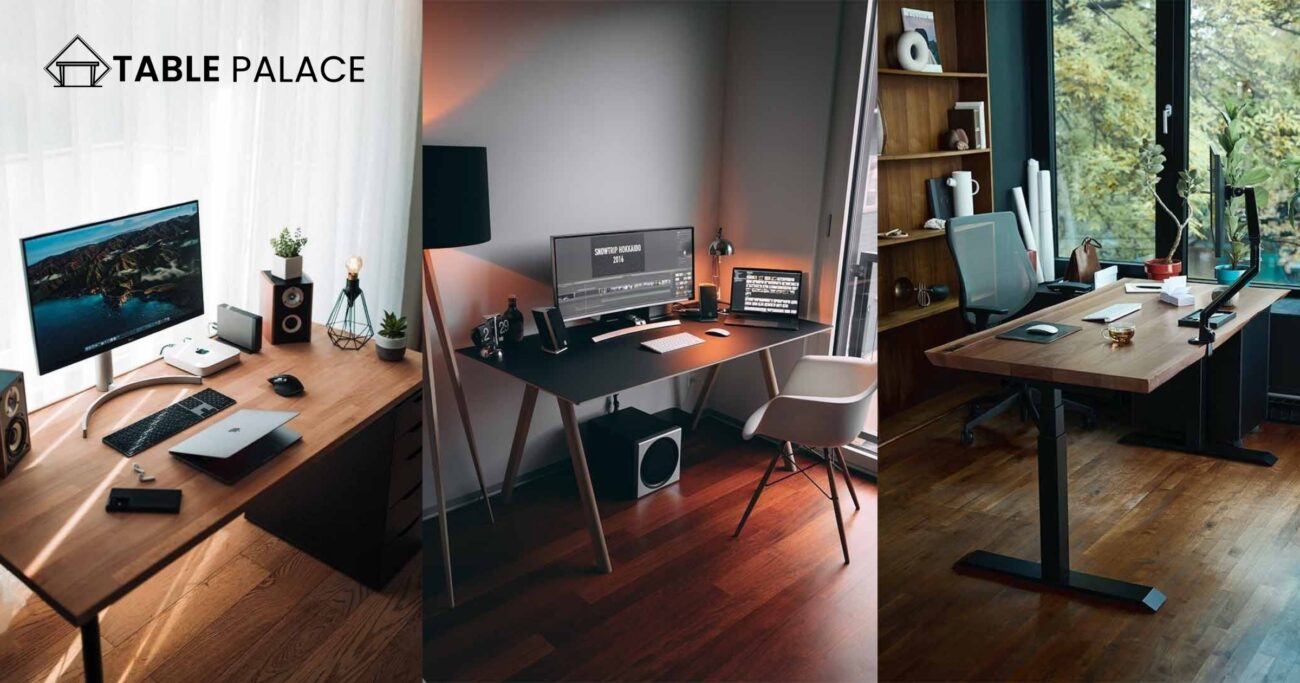
Importance of Desk Material
A desk is not just a piece of furniture. It’s a tool that helps you work efficiently and comfortably. Whether you’re a freelancer, a remote worker, or you run a small business, the importance of having a high-quality desk can’t be overstated. The material of your desk can make a huge difference in how comfortable and productive you are and how long your deck will last.
Comfort While Working:
The comfort of your desk is crucial for productivity and overall well-being. A suitable desk will be the right height and width, with a comfortable surface to work on for long periods. It should also have enough room for all your equipment and paperwork to make you comfortable. The material of your desk can also play a role in comfort. A desk made from a material that conducts heat or is too slippery can make your work experience uncomfortable and distracting. On the other hand, a desk made from a warm material to the touch and provides a stable surface can help reduce stress and increase productivity.
The durability of Desk:
When investing in a desk, it’s essential to consider its longevity. A desk prone to wear and tear will look unsightly and require frequent repairs and replacements. This not only costs time and money but can also be a hassle to deal with. A desk made from high-quality, durable materials such as solid wood or metal will last many years and stand up to regular use. This means you won’t have to worry about it falling apart or becoming damaged, and you can focus on your work instead.
Maintenance Requirement:
The maintenance required for your desk should also be considered. Desks made from specific materials may require frequent cleaning or unique treatments to keep them looking their best. On the other hand, some materials are low maintenance and require little effort to keep them looking great. This can be a significant consideration for busy individuals and business owners who need more time to maintain their desks. A desk made from a low-maintenance material such as laminate or tempered glass is an excellent option for those who want a beautiful and functional desk without maintenance.
The Appearance of the Desk:
The appearance of your desk is another essential factor to consider. A stylish and professional desk can make a great impression on clients, visitors, and colleagues. A desk that needs to be updated, chipped, or scratched can be off-putting and detract from the overall aesthetic of your workspace. A desk made from high-quality materials such as solid wood, metal, or glass can add a touch of sophistication and elegance to your workspace and make a great impression on everyone who sees it.
An Eco-Friendly Option:
Finally, it’s essential to consider the environmental impact of your desk. Desks made from sustainable and eco-friendly materials such as bamboo or recycled materials are an excellent choice for those who want to reduce their carbon footprint and positively impact the environment. These desks are suitable for the planet, look great, and are often more affordable than traditional desks made from non-renewable materials.
The material of your desk can make a big difference in your work experience. It’s essential to consider factors such as comfort, durability, maintenance requirements, appearance, and environmental impact when choosing a desk. Investing in a high-quality desk made from suitable materials allows you to enjoy a comfortable, productive, and stylish workspace for years to come.
What are the Best Material for Office Desk?
When choosing a desk for your office, one of the most critical decisions is the material. The desk is where you will be spending most of your time, and the material of your desk can significantly impact the overall look and feel of your workspace, as well as the durability and functionality of your desk. With so many available options, knowing which material is best for your needs takes work. Now, we will discuss the best desk materials for an office desk and highlight their pros and cons.
Wood as Desk Material
Wood is a classic material used for furniture for centuries. It has a warm, natural look that adds character and warmth to any room. Wood is also a durable material that is easy to care for and can last many years with proper care.
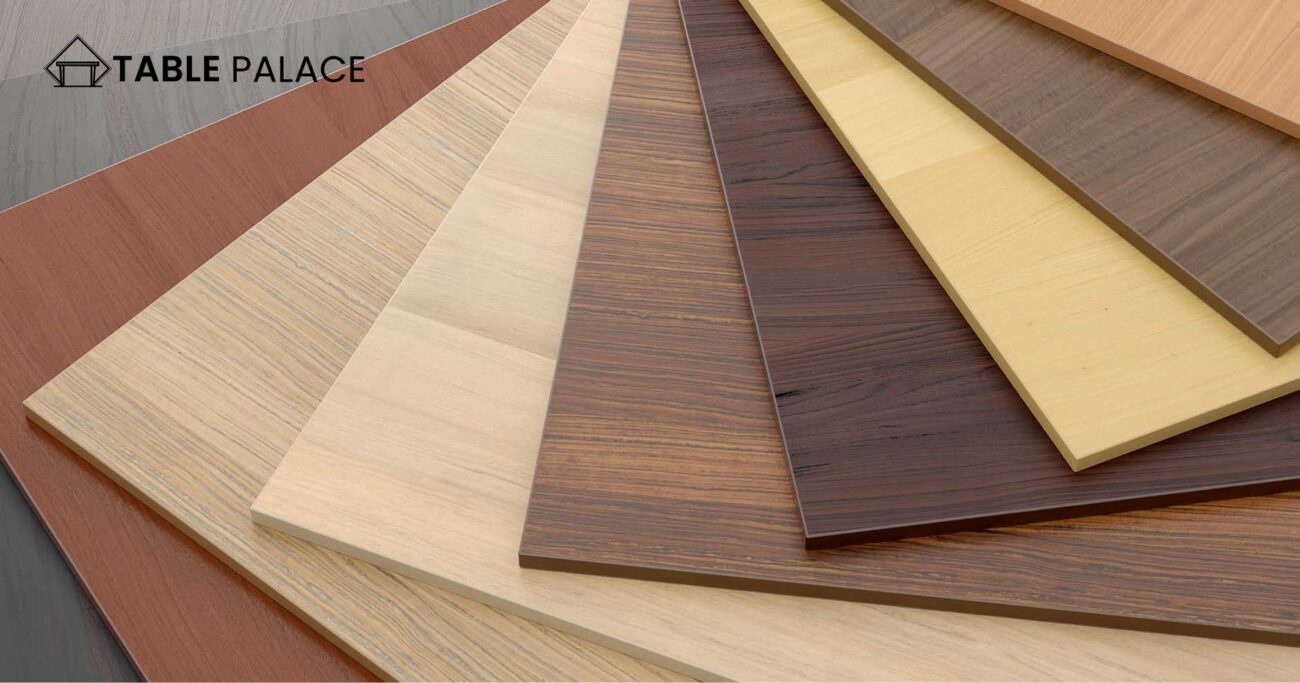
Pros:
- Adds warmth and character to your workspace
- Durable and long-lasting
- Easy to care for and maintain
- Wide variety of options in terms of styles and finishes
- It can be repurposed or recycled at the end of its life
Cons:
- It can be expensive compared to other materials
- It can be susceptible to scratches and dents
- Can expand and contract in different temperatures, causing warping or cracking
Types of Wood for Office Desk
When choosing a wood desk, there are several types of wood to consider. Each type of wood has its unique look and feel; some may be more durable or better suited to your needs than others.
Solid Wood:
Solid wood is a popular choice for office desks because of its durability and natural beauty. Solid wood desks can be made from various types of wood, such as oak, maple, or cherry.
Pros:
- Durable and long-lasting
- Adds warmth and character to your workspace
- Wide variety of options in terms of styles and finishes.
Cons:
- It can be expensive compared to other materials
- It can be susceptible to scratches and dents
- Can expand and contract in different temperatures, causing warping or cracking
Plywood:
Plywood is a composite material made from layers of wood veneer glued together. Plywood is more affordable than solid wood and more stable, making it less susceptible to warping and cracking.
Pros:
- More affordable than solid wood
- More stable, reducing the risk of warping or cracking
Cons:
- Not as durable as solid wood
- It does not have the same natural beauty as solid wood
Bamboo Wood:
Bamboo is a fast-growing, renewable resource that is becoming increasingly popular as a furniture material. Bamboo is a durable material that is also eco-friendly.
Pros:
- Eco-friendly and sustainable
- Durable and long-lasting
Cons:
- It may not have the same natural beauty as other types of wood
- It can be more expensive than other materials
Cocobolo Wood:
Cocobolo is a complex, dense wood prized for its beauty and durability. It has a rich, reddish-brown color, making it a popular choice for office desks.
Pros:
- Beautiful, rich color
- Durable and long-lasting
Cons:
- It can be expensive compared to other materials
- It can be susceptible to scratches and dents
Walnut Wood
Walnut wood is a dark, rich wood known for its durability and resistance to moisture. It is a popular choice for office desks because of its sleek look and modern feel. However, it can be more expensive than other woods and is less readily available than other options.
Pros:
- Durable and moisture resistant
- Sleek and modern look
- Adds warmth and richness to the room
Cons:
- More expensive compared to other woods
- Not as readily available as some other options
Cherry Wood
Cherry wood is a warm and elegant wood often used in traditional furniture. It has a smooth texture and delicate grain pattern, which makes it an excellent option for office desks. However, cherry wood is less durable than other woods and may not be ideal for heavy use.
Pros:
- Warm and elegant look
- Smooth texture and delicate grain pattern
- Adds a touch of classic style to the room
Cons:
- Not as durable as some other woods
- Not ideal for heavy use
Oakwood
Oakwood is a sturdy and durable wood known for its strength and resistance to moisture. It has a classic look that adds warmth and richness to any room. However, it can be more expensive than other woods and may be less readily available.
Pros:
- Sturdy and durable
- Resistant to moisture
- A classic look that adds warmth and richness to the room
Cons:
- More expensive compared to other woods
- It may not be as readily available as some other options
Maple Wood
Maple wood is a light-colored wood known for its durability and smooth finish. It has a modern look that is perfect for those who want a minimalist style in their office. However, it can be more expensive than other woods and may be less readily available.
Pros:
- Durable and smooth finish
- Light-colored and modern look
- Perfect for minimalist style
Cons:
- More expensive compared to other woods
- It may not be as readily available as some other options
Ash Wood
Ash wood is a solid and durable wood known for its flexibility and resistance to moisture. It has a warm and classic look that adds a touch of sophistication to any room. However, it can be more expensive than other woods and may be less readily available.
Pros:
- Strong and durable
- Flexible and resistant to moisture
- A warm and classic look that adds sophistication to the room
Cons:
- More expensive compared to other woods
- It may not be as readily available as some other options
Cedar Wood
Cedarwood is an excellent option for those who want a rustic, natural look for their office desk. This wood is lightweight, durable, and naturally resistant to decay and rot. Cedarwood is an excellent choice for those who are looking for a desk that is both functional and aesthetically pleasing.
Pros:
- Lightweight
- Durable
- Naturally resistant to decay and rot
- Adds a rustic, natural look to the office
Cons:
- Prone to warping and cracking
- Soft and can easily be scratched or dented
Pine Wood
Pine wood is an affordable and popular option for office desks. This type of wood is easy to work with and has a natural, warm appearance that can add a touch of coziness to any office space. Pine wood is an excellent choice for a budget-friendly option that still looks great.
Pros:
- Affordable
- Easy to work with
- Adds a natural, warm appearance to the office
Cons:
- Soft and can easily be scratched or dented
- Prone to warping and cracking
Elm Wood
Elmwood is an excellent option for those who want a robust and durable desk. This type of wood is rugged and sturdy, making it ideal for office desks with heavy use. Elmwood is an excellent choice for a desk that will last for years.
Pros:
- Hard and sturdy
- Ideal for heavy use
- Adds a natural, warm appearance to the office
Cons:
- Can be expensive
- Prone to warping and cracking
Teak Wood
Teak wood is an excellent option for those who want a durable and weather-resistant desk. This type of wood is naturally resistant to decay and rot, making it ideal for outdoor offices or homes in areas with high humidity. Teak wood is an excellent choice for those who want a desk that can withstand the elements.
Pros:
- Naturally resistant to decay and rot
- Ideal for outdoor offices or homes in high-humidity areas
- Adds a natural, warm appearance to the office
Cons:
- Can be expensive
- It can be heavy and difficult to move.
Plastic as Desk Material
Plastic is another popular material used for office desks. It is a low-cost and lightweight option that is also easy to clean and maintain. Some of the pros of using plastic as a desk material include the following:
Pros:
- Durability: Plastic is a durable material that can withstand daily wear and tear. It is also resistant to scratches and stains.
- Affordability: Plastic is one of the most affordable materials on the market, making it an excellent option for those on a tight budget.
- Accessible to Clean: Plastic is easy to clean and maintain. Wipe it down with a damp cloth to keep it looking like new.
Cons:
- Aesthetic: Plastic does not have the aesthetic appeal of other materials like wood, glass, or metal. It can also look cheap and tacky if chosen in a different color or design.
- Uncomfortable: Plastic can become very hot in direct sunlight, making it uncomfortable to sit at for extended periods. Additionally, it can also feel cold in colder climates.
- Lack of Durability: Plastic can become brittle over time and crack or break easily. It also needs the durability of other materials like wood or metal.
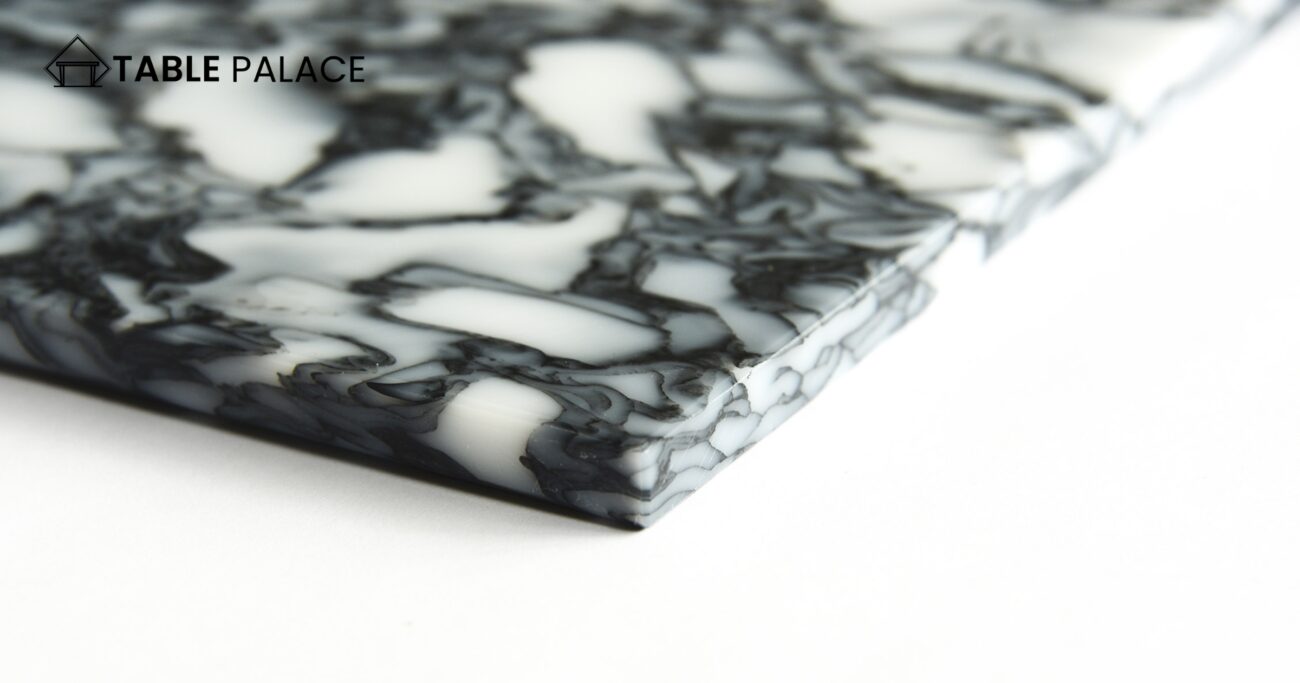
Metal as Desk Material
Metal is a popular choice for office desks due to its durability, strength, and stylish design. Some of the pros of using metal as a desk material include the following:
Pros:
- Durability: Metal is a strong and durable material that can withstand heavy use and abuse.
- Style: Metal desks can be designed in various styles and colors to match your office décor.
- Accessible to Clean: Metal is easy to clean and maintain, making it an excellent option for those who want a low-maintenance desk.
Cons:
- Cost: Metal desks can be more expensive than plastic or laminate desks.
- Weight: Metal desks can be heavy, making them difficult to move or rearrange.
- Scratches and Dents: Metal desks can scratch and dent easily, which can be unsightly and reduce their overall appeal.
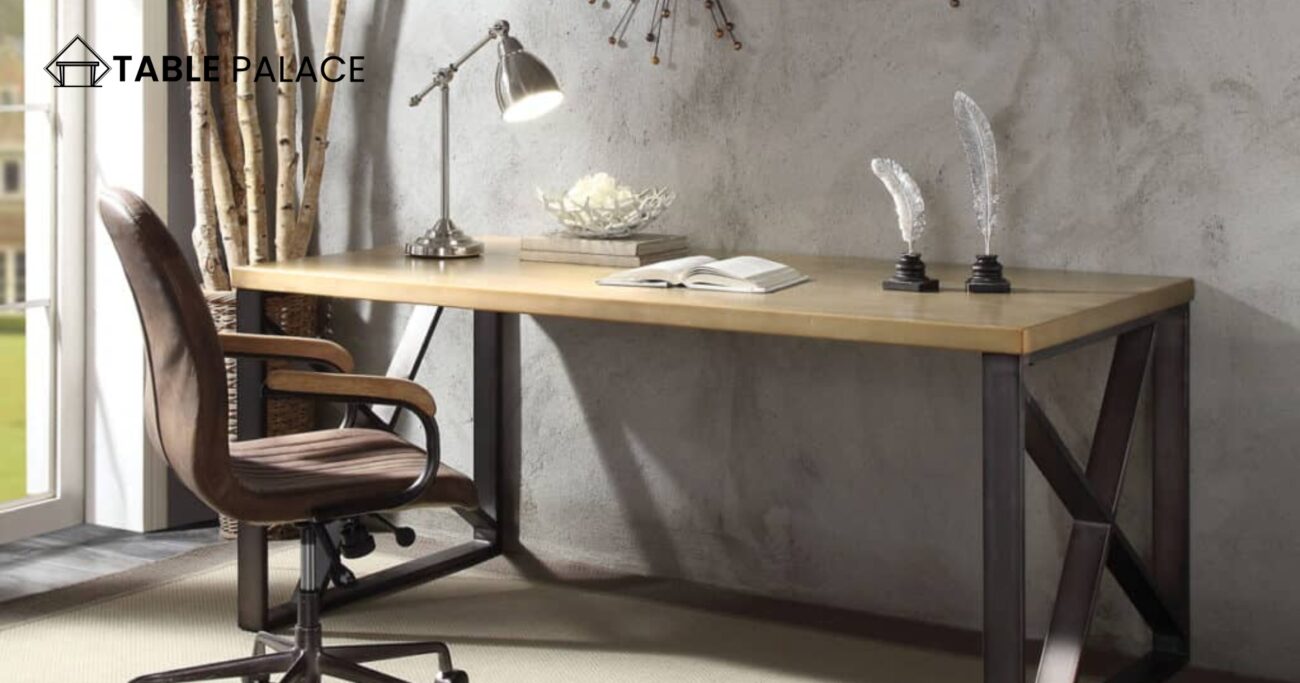
Laminate as Desk Material
Laminate is a popular material used for office desks due to its affordability and versatility. Some of the pros of using laminate as a desk material include the following:
Pros:
- Affordability: Laminate is one of the most affordable materials on the market, making it an excellent option for those on a tight budget.
- Versatility: Laminate can be designed in various styles and colors to match your office décor.
- Easy to Clean: Laminate is easy to clean and maintain, making it an excellent option for those who want a low-maintenance desk.
Cons:
- Durability: Laminate can become damaged quickly and can scratch or dent easily. It also needs the durability of other materials like wood or metal.
- Aesthetic: Laminate can look cheap and tacky if chosen in a different color or design.
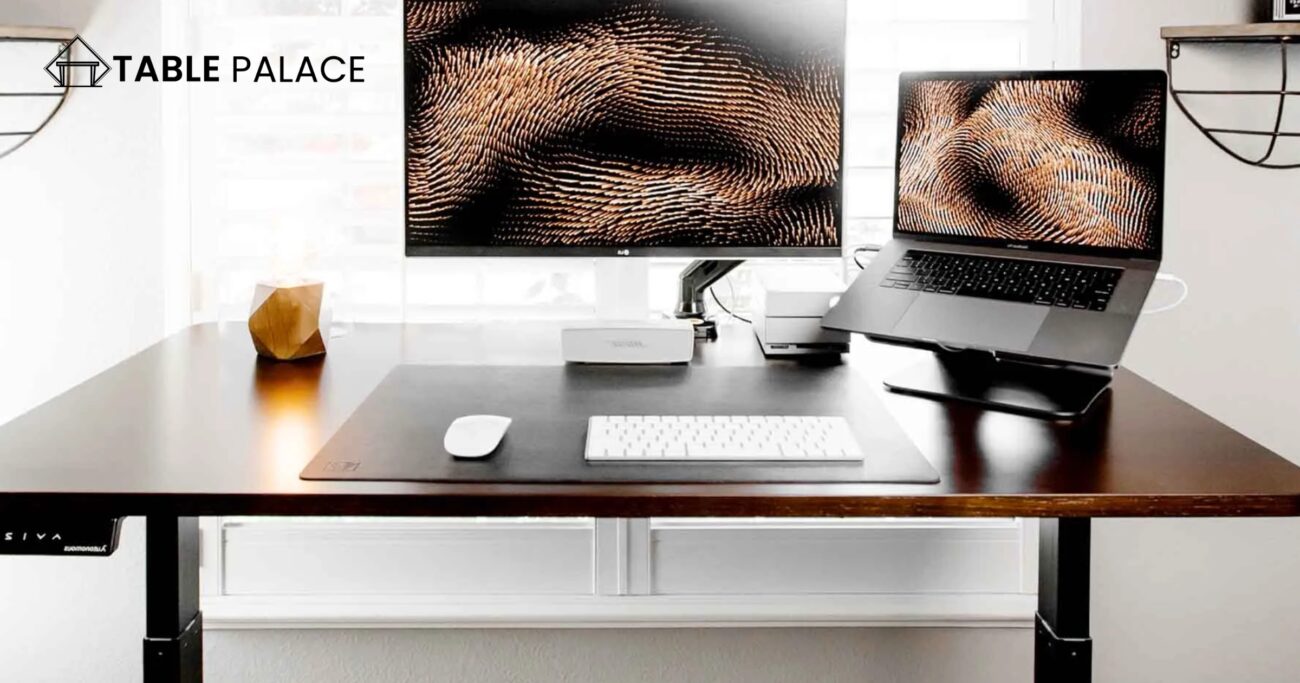
Video Guide
Conclusion
In conclusion, there are many materials to choose from when choosing the best office desk material. Whether you prefer the classic look of wood, the durability of metal, the affordability of plastic, or the versatility of laminate, there is a material out there to meet your needs. Consider your budget, your style preferences, and your daily needs when making your decision. Whichever material you choose, make sure it is comfortable and meets your work-from-home needs so that you can be productive and Effective.

